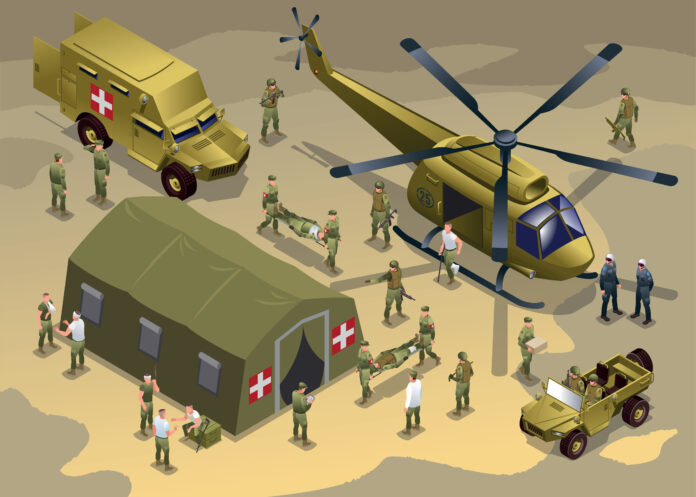Over a 20-year period from 2000-2020, the medical services of the United States Military recorded nearly 425,000 traumatic brain injuries, from all mechanisms and severities. While the immediate image that comes to mind is that of an improvised explosive device (IED) causing severe traumatic brain injury from blast effect and fragmentation, one of the more challenging scenarios for the deployed military neurosurgeon is concussion and/or mild TBI (mTBI). In cases of combat related severe TBI, removal of a soldier from the battlefield is directly related to the extent of injury. In contrast, for concussion and/or mTBI, the decision of whether or not to evacuate the soldier to a medical treatment facility for a CT scan or further treatment can be complex since it requires aeromedical evacuation through a combat zone, thus putting flight crews at risk.
As an example, while overseas in a combat zone, we are routinely consulted on soldiers who develop signs and symptoms of concussion while stationed several hours away in austere outposts. The local treatment teams question if soldiers should be evacuated via air ambulance to our hospital for CT scan; a second question is the timing of return to duty at the remote outpost in the setting of a negative CT scan. These discussions have multiple downstream effects on not only the soldier, but also their unit capabilities, availability of helicopter transport and the safety/security of personnel involved. While the Military Acute Concussion Evaluation (MACE 2) was created for the purposes of diagnosing and triaging concussion, it can be difficult and time intensive to administer.
The development of point-of-care blood-based biomarkers such as GFAP and UCH-L1 to rule out the need for head CT has been of great interest to the military, particularly in scenarios as described above. In the deployed environment, being able to rule out the need for a head CT also negates the need for helicopter transport and the associated risks of flight in combat conditions. GFAP has been in use in deployed environments by current active-duty neurosurgeons and has already resulted in a reduction of aeromedical evacuation from remote outposts, saving substantial cost as well as reducing transport risk.
This is just the beginning of blood-based biomarkers in mTBI, not only for the military, but also for civilian populations. Rapid aids to diagnosis, such as immediate GFAP on whole blood, pupillometry and other non-invasive strategies have the potential to change the diagnosis and initial management of mTBI on the battlefield, but also on the playing field. With an emphasis on early recognition of concussion in contact sports, blood-based biomarkers may play a role in identifying individuals who have sustained a concussion or TBI and removing them from the game to avoid secondary injury. Substantial work remains, however, as not only is diagnosis important, but ongoing symptom monitoring, and return to play/duty are also key questions. GFAP may not be the ideal marker for monitoring post-injury, but other biomarkers may allow for tracking of recovery and response to treatment. While it is unlikely that biomarkers will completely replace clinical evaluations of concussion, they may play a substantial role in rapid identification and initial management.
Research into TBI biomarkers is an expanding field, driven by collaborations across multiple large treatment centers, such as TRACK-TBI for civilian TBI, and the Military Traumatic Brain Initiative for military TBI at the Uniformed Services University. Development of biorepositories with thousands of samples from patients at time of injury and during their recovery will be required to increase the signal to noise ratio of relevant biomarkers from multiple sources across the spectrum of proteomics and metabolomics. Substantial work will be necessary to correlate the basic science research findings to clinical characteristics of TBI. This effort will be validated by the real-world impact, whether it be reduction in aeromedical evacuation in a hostile environment or identification and removal of an at-risk athlete from further play. It is certainly an exciting time to be involved in blood-based TBI biomarker research, and early clinical/systematic returns are becoming apparent. While much work remains, the potential impact for both military and civilian patients and hospitals clearly make this effort worthwhile.
Disclosure: “The opinions and assertions expressed herein are those of the authors and do not reflect the official policy or position of the Uniformed Services University of the Health Sciences or the Department of Defense.”








